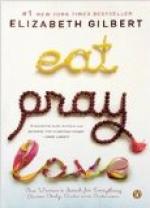“They are not Mohammedans,” suggested Mrs. Woolridge.
“They may be for aught I know,” replied his lordship. “The women of this sect here do not veil their faces as a rule.”
“They are quite good-looking,” added the New York magnate. “What caste or class do they belong to?”
“I should say they were in the Vaisya caste, agriculture and trade. They are well dressed, and therefore not Sudra. Probably they are the wife and daughter of a shopkeeper.
“What is this crowd in the square?” asked Morris, who had been looking about him.
“We will drive over there and see,” replied the viscount as he directed the coachman.
“Festival of Serpents,” said the driver through the window.
“You have an opportunity to see one of the sights of Bombay; but we shall be obliged to leave the carriages, for it is a great performance, and there will be a large crowd.” They alighted at a convenient place, and moved towards the square. The ladies were in doubt as to whether or not they cared to see such an exhibition; but the three gentlemen who were accustomed to them declared that there was no danger.
“This affair is in the nature of a religious festival,” said Sir Modava. “There are scores of snakes brought before you; but they have had their poison fangs extracted, and they could not harm you much more than a playful kitten. This is a day appointed to make prayers and offerings to the snakes, in order to conciliate them and to insure immunity from their bites. Though these occasions occur all over India, I don’t believe there is a single bite the less for them.”
“It is the anniversary of the killing of the great serpent Bindrabund, which was creating terrible havoc on the shores of the river Jumna, an event in Hindu mythology, which is as true as any mythology,” added Lord Tremlyn. “You observe that it calls together a great crowd of people of all classes, and you see fat Brahmin ladies here in palanquins, very richly dressed, and looking as sweet as sugar. You notice the rich standards and the torches, the trumpeters, and the girls playing on tom-toms and cymbals. But we must get nearer to the centre of the show.”
“Not too near,” pleaded Mrs. Woolridge.
The crowd opened for the sahibs and the ladies, treating them with the utmost deference, as though they were superior beings; and they obtained a position where they could see the entire performance. A group of sapwallahs, or serpent-charmers, each bearing a basket about fifteen inches in diameter at the bottom, but not more than ten at the top, each containing several cobras, marched into the centre of the crowd. Pious Hindus brought forward bowls of the milk of buffaloes, of which the serpents are very fond, and placed them on the ground. The snakes were released from their confinement, and they made for the bowls of milk without any delay.
Some of the tourists had never seen a cobra, though they are found in Egypt. The ladies shrank back when they appeared, and some of them shuddered at the sight of the reptiles. The body was somewhat enlarged near the head, and the spectacles could be distinctly seen in this part. The instruments played, the standards and the torches were waved; but the snakes continued their milk feast undisturbed.




